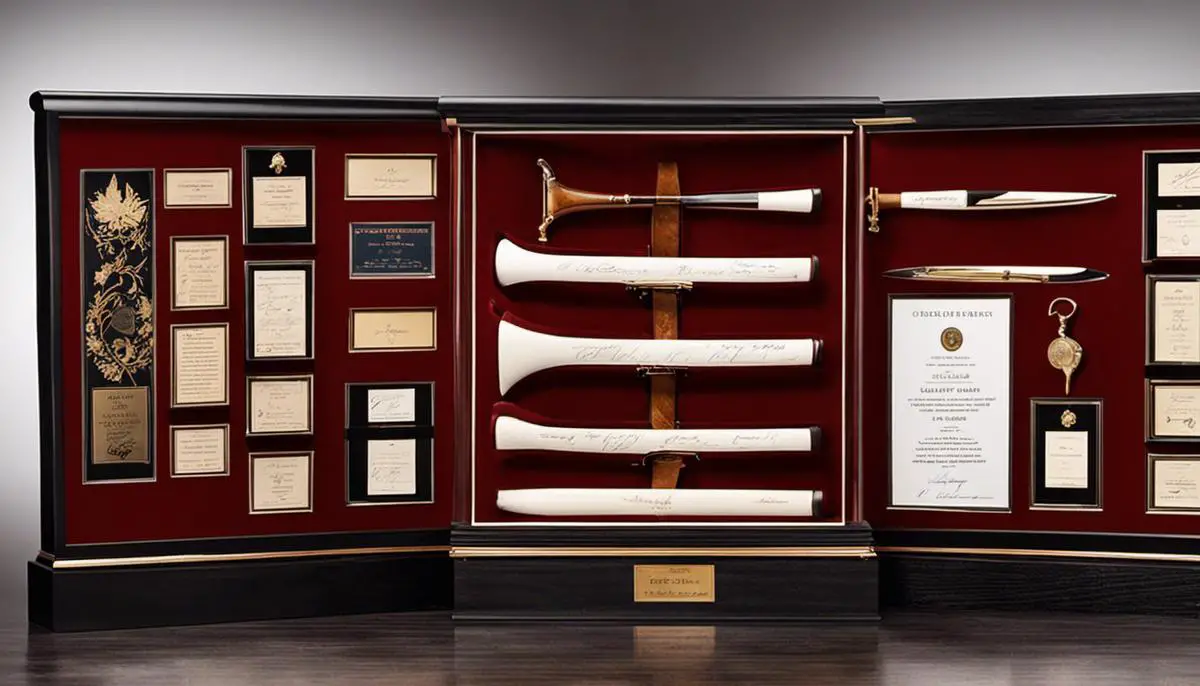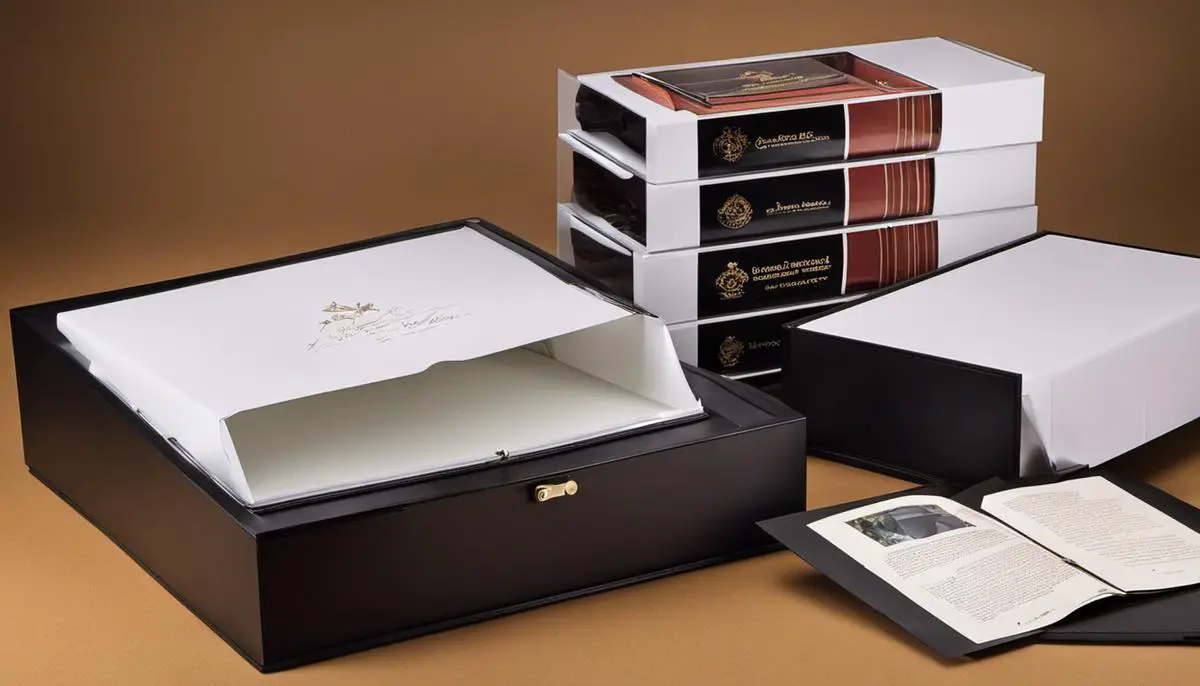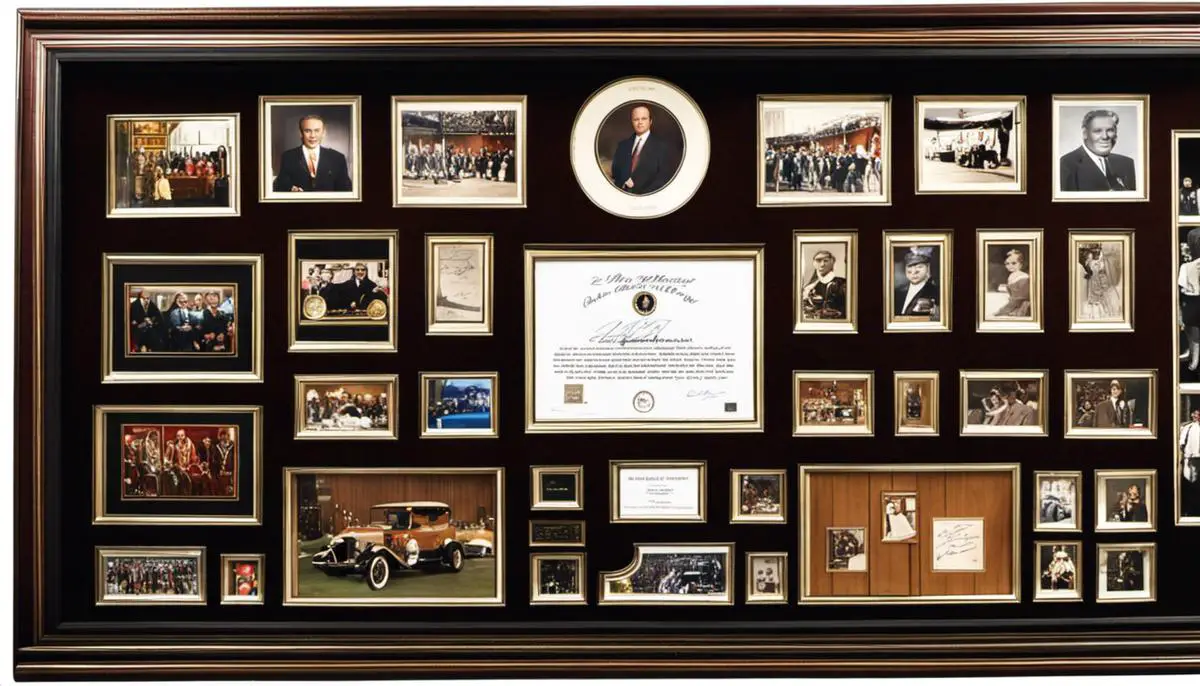Collecting autographs can be an endearing pastime, a link to the personalities that inspire our love for a sport, our admiration for achievements in arts and literature, or our passion for music or politics. More than this, each autograph can be an investment, holding significant monetary and sentimental value. However, their preservation poses a unique challenge, requiring a blend of love, forethought, and practical knowledge. This takes us to the heart of why understanding the significance of autograph preservation, the materials needed, the steps to take and the importance of documenting and cataloging your autographs is vital. Harper Lee once wrote “The book to read is not the one which thinks for you, but the one which makes you think”. Let this writing be the one that makes you think about autograph preservation that’s much more than memorabilia; it’s your tangible connection to those who inspire you.
Understanding the Importance of Autograph Preservation
Understanding the Importance of Autograph Preservation
Preserving autographs is critical for several reasons. First and foremost, autographs are typically sought after due to their celebrity linkage, historical importance, or the admiration one holds for the person who inked their name. The potential for autographs to increase in value over time makes preservation paramount.
The value of an autograph is greatly influenced by the condition of the media on which it was signed. However, autographs are susceptible to numerous types of damage that can cause their worth to deteriorate, making proper preservation techniques invaluable.
Damage to Autographs and Monetary Implications
The common types of damage to autographs primarily include fading, smudging, tearing, moisture damage, and sun damage. Each of these damages can drastically impact an autograph’s value, thereby carrying potential financial implications.
Fading, for example, can occur due to prolonged exposure to light or sun, while smudging results from improper handling. Physical damages such as tearing could occur due to mishandling, careless transportation, or storage. Moisture damage, on the other hand, happens due to damp storage conditions that can lead to mildew formation.
Autographed items’ values are not only affected by the celebrity’s status but heavily by the condition of the autograph itself. To illustrate, an autograph by a renowned personality in worn-out condition might fetch significantly less than the same autograph in pristine condition.
Preventing Damage to Autographs
Understanding the basics of autograph storage is essential to preventing these types of damage and maintaining, if not increasing, the value of your autographed items. By ensuring proper storage conditions and careful handling, not only do you protect your prized possession from potential mishaps but you also can significantly increase its monetary value in the long run.
As such, it’s crucial to invest in appropriate storage tools such as acid-free sleeves or display cases to protect against dust, light exposure, and physical damages. Regularly monitoring stored autographs for signs of wear and dampness also helps in early detection of potential damages, thus preventing them from further escalating.
In sum, understanding the importance of autograph preservation is the cornerstone to maintaining the charm, integrity, and values of your autographed items. Overlooking these aspects can lead to damages, which can significantly diminish the worth and sentimental value of these treasures.

Materials needed for Autograph Storage and Preservation
Acid-Free Materials for Autograph Storage & Preservation
When storing and preserving autographs, it is essential to use acid-free paper and storage materials. Acid-free materials won’t yellow or deteriorate over time, meaning they will provide long-term protection for your autographs. Items that fall into this category include acid-free paper, cardboard, and tissue paper.
These can be procured from various retailers, both online and physical. Check websites like Amazon, eBay, and Staples for acid-free materials. It is important always to check the product details to ensure that it’s genuinely acid-free.
Protective Sleeves & Storage Boxes
Another absolute necessity for preserving autographs are protective sleeves and storage boxes. For sleeves, opt for plastic or Mylar types that offer a clear, transparent barrier between the autograph and the outside environment. Just make sure they are free of PVC, as this can give off gases that degrade autographs over time.
As for storage boxes, acid-free boxes are ideal. These boxes can be easily stacked and stored while ensuring the autographs inside are kept safe.
Again, these can be found on popular online marketplaces, such as Amazon or eBay, in office supply stores, and various specialized archival suppliers.
Binding Materials
Binding materials, such as albums or binders, are another way to keep your autographs safe. Ensure these materials are also acid-free. Binders often come with plastic sheets which can provide another level of protection for your stored autographs. Some binders are made especially for autograph storage, providing individual pockets for each item.
These items can be purchased from bookstores, office supply stores, or online via Amazon, eBay, Staples, etc. Remember to keep an eye on the product descriptions to ensure you are buying an acid-free, high-quality binder.
Display Cases
For particularly special autographs, a display case might be the best option. These are often UV-resistant, providing further protection for the autograph. Make sure any matting or backing in the case is acid-free.
You can find these at specialty stores that offer framing services, as well as online retailers such as Amazon or museum supply websites.
In Conclusion
Regardless of the type of autograph storage and preservation materials you choose, the most significant element to remember is to opt for acid-free materials, as these will provide the best long-term protection for your items. Monitoring and controlling the environment where your autographs are stored can also help prevent potential damages. This includes maintaining a stable temperature, avoiding high humidity levels, and reducing exposure to light.

Steps in Autograph Preservation
Handling Your Autographs Correctly
Start by ensuring you handle your autographs with clean hands, free from lotions or oils that could damage or discolor the paper. It’s always a good idea to use cotton gloves while handling to avoid any direct contact. Be sure to hold the autographed item by the edges to reduce your touch on the signed area.
Storage Temperature and Humidity Levels
The ideal temperature to store autographs is around 65 to 70 degrees Fahrenheit, while the relative humidity level should be kept at approximately 50%. Extremes of temperature and humidity can cause the ink to fade and paper to deteriorate. It’s crucial to store your autographs in a stable environment and avoid attics, basements, or areas that experience large swings in temperature and humidity.
Light Levels
Never expose your autographs to direct sunlight or intense artificial light, as this can result in fading. Instead, display or store your autographs in places away from light sources or where light levels can be controlled. If you need to display the items, consider UV-protected cases or frames.
Cleaning and Maintenance Procedures
Do not attempt to clean your autographs yourself to avoid any accidental damage. Instead, rely on professionals in the archives or museum fields for this task. Regular maintenance should involve periodically checking your autographs for signs of damage or change. Rotate your items on display to save them from constant light exposure.
Correct Storage Materials
Store your autographs individually in acid-free folders to prevent any reaction with the paper over time. Polypropylene sleeves can be used for added protection as it doesn’t generate static and won’t stick to the items, unlike PVC. Archival quality boxes provide an extra layer of safety, keeping out light and dust.
When to Seek Professional Help
If you own autographs that are already in poor condition, or that have emotionally or financially significant value to you, consider consulting with a conservator. These are professionals dedicated to the preservation of cultural property for the future. They can provide advice on storage and care, perform restoration services, and address problems like mold growth, liquid damage, and torn or creased documents.
Remember, improper repairs or restoration attempts can damage autographs more and reduce their value. Hence, always seek professional help when dealing with severely damaged or highly valuable autographs.

Documenting and Cataloging your Autograph Collection
The Significance of Documenting and Cataloging Your Autograph Collection
A systematic approach to documenting and cataloging your autograph collection ensures that you maintain an organized record of each autograph. This not only protects your collection but also increases its value, allowing you to keep track of the source and authenticity of each autograph. It also aids in efficient retrieval and ensures their preservation over time. Furthermore, with a well-organized catalog, it becomes easier to present your collection to interested parties or for insurance purposes.
Techniques for Cataloging Your Autograph Collection
Cataloging your autograph collection mainly involves detailing when and where you obtained each autograph, identifying the individual who provided it, as well as noting any unique factors or related anecdotes. Start by creating a detailed description for each autograph in the collection, noting its size, color, and any visible damage. Follow this with an account of its origin story, including where and when it was obtained, and any interesting circumstances surrounding its acquisition. These details add value and interest to your collection.
Exploring Digital Options for Cataloging
Digitizing your catalog not only guarantees its security but also makes it shareable with others in the autograph community. Make use of software platforms or cataloging apps that allow you to keep a record of the autographs digitally. Such platforms provide features like location tagging, date recording, and photo attachments, creating an easy-to-access, detailed log of your collection. Regularly updating your digital catalog and creating backups is vital in ensuring its longevity.
Considerations for Insuring Your Collection
Insuring your autograph collection can provide peace of mind against unexpected losses or damages. Research various insurance companies and policies that offer coverage of collectibles, such as autographs. The key considerations should be the financial value of your collection, the policy limit, and the types of incidents covered by the policy. It’s important to keep a regularly updated catalog of your collection to provide to your insurer, ensuring that all items are covered.
Preservation of Autographs
The preservation of autographs involves protection against environmental damage which can result in fading, tearing, or staining. Store autographs in acid-free folders, boxes, or cases, and avoid exposing them to excessive heat, light, or humidity. Also avoid using damaging materials like staples, rubber bands, or adhesive tape on autographs.
Conclusion
Documenting and cataloging your autograph collection is an essential part of managing and preserving your collection. It provides a firm foundation for adding value to your collection, facilitating insurance processes, sharing your collection with others, and ensuring the long-term survival of your prized autographs.

Looking after our precious autographs is not simply about safeguarding their financial value but also about preserving memories and history. As we venture into the world of autograph collection, understanding the importance of preservation, having the right types of materials, practicing suitable preservation steps and creating an organized catalog become more than necessary. This plunge indeed offers an opportunity for us to play our part in protecting a small piece of history, creating a legacy which can be passed down the generations. As Helen Keller once said, “People do not like to think. If one thinks, one must reach conclusions. Conclusions are not always pleasant.” However, with sufficient knowledge and understanding on autograph storage and preservation, we can reach a pleasant conclusion – a well-preserved collection of autographs, that’s a proud piece of history.

